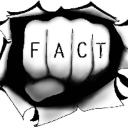Yahoo Answers is shutting down on May 4th, 2021 (Eastern Time) and beginning April 20th, 2021 (Eastern Time) the Yahoo Answers website will be in read-only mode. There will be no changes to other Yahoo properties or services, or your Yahoo account. You can find more information about the Yahoo Answers shutdown and how to download your data on this help page.
Trending News
The FED caused the Great Depression?
In 1913, the Democrats wanted a more centralized banking system, and they did just that with the Federal Reserve Bank. It would lower interest rates, regulate the amount of money in the economy and control inflation. All of this sounds good right? The reserve was ratified by Congress in the same year.
Things went right initially. The Federal Reserve drastically reduced interest rates, and fueled by recent stock gains, stock market investment was at an all time high. The Stock Market was making gains approaching 20% per year in the mid-1920s, while the interest rate was around 1% at the time. If you could borrow money at 1% and get a return of 20% with inflation being marginal, wouldn't that sound like a good idea? Thus, massive loans were taken out. The economy was in the best shape it had ever been. But there was a problem.
Inflation started happening as people bought more and more, and there soon was too much money chasing too few goods. As incomes went up, so do costs. The Federal Reserve had to maintain a steady flow of money into the economy to keep the economy running. Thus, the economy had become dependent not only on the low interest rates for growth, they had become dependent on a steady supply of money flowing in.
To try to counteract this inflation, the Federal Reserve raised interest rates. This caused fewer loans to be given out and less money to be flowed into the economy. The savvy investors saw this, and got out of the market. This weakened the market. The other investors saw the slowdown in the growth, and immediately panicked, and withdrew all their money as fast as they could. Some investors who saw this happening got out of the marketplace early, weakening the bullish market. As the markets stopped going up investors began to panic and sell their shares of stock. Over leveraged investors scared of losing their life savings sold their shares of stock and forced the market downward. This caused the stock market to nose dive. Americans started saving more and more, causing the essential parts of GDP, Consumption and Investment to be drastically reduced, this having a disastrous effect on GDP itself. After the crash Americans started spending less and started saving more. This lead to less production and less jobs, causing unemployment to go higher and higher. And thus, we have a recession.
The Federal Reserve at the time was doing the exact opposite of "correct" monetary policy. Normal monetary policy is to have low interest rates during recessions, high interest rates during inflation, and medium interest rates at all other times. But before the crash, which started out normal and then turned into an extreme boom period, the Federal Reserve's interest rates, as stated earlier at 1%. You could borrow money at 1%.. This was bound to be a disaster as infation was encouraged and a huge boom was created that was so large that the pace could not be kept up. And because of that, when the Federal Reserve had to raise interest rates, there was a crash.
When you pump money into the economy during infation, you are basically just contributing more to inflation. This caused the interest rates to be raised higher and to be raised higher quicker.
And what happened is that the FED followed policies which led to a decline in the quantity of money by a third. For every $100 in paper money, in deposits, in cash, in currency, in existence in 1929, by the time you got to 1933 there was only about $65 left. And that extraordinary collapse in the banking system, with about a third of the banks failing from beginning to end, with millions of people having their savings essentially washed out, that decline was utterly unnecessary.
The Federal Reserve caused a decline in money in 1929 (not to be confused with the pumping of money in the mid-1920s that caused the inflation in the first place) that restricted the amount of money flowing into the economy. This is disasterous during a recession when you need all the money you can get.
This massive destruction of liquidity began when the Federal Reserve responded to the 1929 stock market crash by allowing the quantity of money to decline by 2.6 percent over the next year. This extremely tight monetary policy put the economy into severe recession.
Too many believe the Smoot-Hawley Tariff Act is solely responsible for the cause of the Great Depression. It only made it worse. The Smoot-Hawley Tariff Act was dumb since GDP=C+I+G+X, you want to raise GDP in a depression, and Tariff Acts would lower net exports (the X), which would lower GDP
In conclusion, after it was all said and done, and the depression ended, we ended up losing 27% of the dollars purchasing power because of the FED.
10 Answers
- 8 years agoFavorite Answer
The Great Depression is nothing compared to what is coming our way.
- 8 years ago
Another thing that made it worse was how long the US money supply was locked to the gold supply. Countries like Britain (which dumped the gold standard in 1920), Canada and Australia (1930 and 1931) suffered a much milder recession than we did.
- beliceLv 45 years ago
there is a great deal of artwork achieved via an excellent many extremely smart economists and historians with reference to the origins of the super melancholy, and there is not any settlement approximately any single reason. evaluate this, notwithstanding: between the unequivocal indicators of the melancholy became deflation. This deflation became brought about via a contraction of the money grant (very like 2008, yet worse). The Fed could have counteracted this deflation (because it did in 2008) yet interior the Thirties it did no longer counteract deflation as much because it ought to have. In thinking approximately this, shop on with the money. the biggest subject with turning out to be new money to offset contractions interior the money grant is this: who gets the hot money? it extremely is totally confusing to grant it to the balloting public, and elementary to grant it to bankers. one thank you to grant the hot money to the universal public is this: decrease taxes, and pay off the consequent deficit with the newly-created money. that's form of what we are doing now.
- honestamericanLv 78 years ago
sounds like opinion and conjecture to me!
The real cause of the Great Depression was allowing investors to buy on margin!They were selling shares of stocks for 10% of face value!Which created inflated balance sheets that were unsustainable!When the margins were called to cover the 90% nobody could pay!Which is what cause the stock market crash that sparked the depression!
- How do you think about the answers? You can sign in to vote the answer.
- Anonymous8 years ago
No, at least not completely.
Low wages, falling prices for farmers, overproduction, low consumer demand, with the stock market crash to top it all off.
- DeliveranceLv 68 years ago
It allowed the rich friends of the fed to buy up companies for a penny on the dollar.
- 8 years ago
Well the Fed has shareholders and doesn't belong to the American people, enough said
- Anonymous8 years ago
Go make a blog.
- Anonymous8 years ago
great link?






